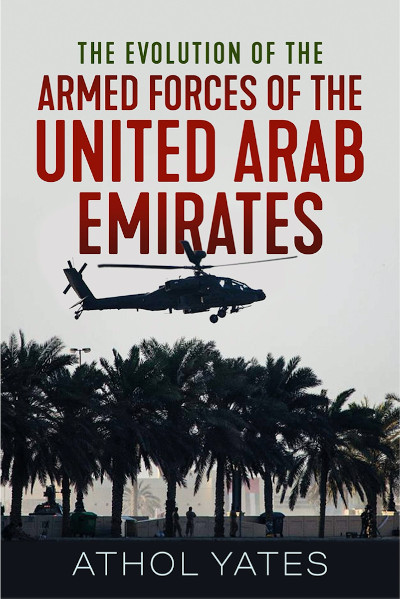In the picture
Cover of Athol Yates' book 'The evolution of the Armed Forces of the UAE' (Warrwick: Helion & Company, 2020) 380 pages.
Professor Athol Yates, a specialist on the United Arab Emirates (UAE) and a connoisseur of its military, police and intelligence history, publishes this book at a time when the small country's influence on the future of the region has assumed outsized proportions, thanks in part to its effective armed forces. Over the past five years, the UAE has repeatedly demonstrated that it has the capacity to conduct complex operations far from home, and to become a security and training provider , reshaping the future of conflicts in Libya, Somalia and Yemen and other countries in the region. How have the UAE Armed Forces achieved such effectiveness? What are their key characteristics? These and many other questions are answered in this new study by Athol Yates.
The book is divided into three parts. The first part focuses on how the physical, political, social and historical environment has influenced the development of the UAE Armed Forces. For example, the fact that the UAE's coastline is very shallow and acts as a natural defence against maritime and amphibious invasions financial aid to better understand why the UAE has not historically prioritised the development of its navy, compared to its land and air forces. Another example: the author's explanation of the concept of asil (أصيل), which can be translated as 'authenticity' or 'originality', illuminates some of the processes by which those who occupy the most sensitive positions are chosen: the greater the asil, i.e. family ties to the older tribes of Arabia and direct descent from the Prophet Abraham, the more likely one is to occupy senior positions in the military.
In the second part, Athol Yates defines the main characteristics of the UAE Armed Forces, referring to their essential missions, and their relationship with equipment and manpower. Its missions, in a nutshell, include (1) defence of territorial integrity and sovereignty, (2) protection of the ruler and his family, (3) reinforcement of domestic security, (4) nation-building, and (5) support for foreign policy. The latter mission statement is not limited to conventional military operations, but includes a range of diverse activities, such as joint military exercises with a multitude of European, African and Asian countries, sending Emirati officers to military schools in the UK and the US, training militias and police forces in Yemen, Puntland or Iraq, and other military cooperation and defence diplomacy activities across a broad spectrum.
With regard to equipping the armed forces, there is a preference for advanced, high-tech systems, facilitated by an astronomical budget in defence (the UAE was the third largest arms buyer between 2012-2016). Apart from facilitating better performance, the acquisition of advanced systems enhances the prestige of the Armed Forces, serves as a deterrence strategy against Iran and financial aid to make up for the lack of staff, thanks to automation. It is striking that the UAE has decided to diversify its arms supply, buying Russian, Chinese, Turkish, French and American systems without choosing sides in the competition between the major powers. In this way, the UAE can reinforce its strategic autonomy, garner diverse international support and avoid presenting itself as a lackey of certain Western countries to the Arab public.
In the context of the armed forces, the author explains how the federation has made every effort to overcome certain limitations and build effective forces. With a very small population, it is difficult to find qualified citizens to serve in the armed forces. goal To this end, the UAE inaugurated compulsory military service in 2014, with the dual aims of instilling patriotic values in its citizens, and recruiting and retaining the best. The UAE often has to rely on foreign professionals to train its armed forces, and even to directly support Emirati troops in combat operations. Even with this additional support, the military burden ratio is one of the highest in the world: in 2016, 63 Emiratis out of every 1,000 were members of the military.
In the third part, the author traces the evolution of the different forces in the UAE territory during recent history (the federation was born in 1971). Between 1951-1971, the main force responsible for maintaining order and defending the territory was the Trucial Oman Scouts, which answered to the British authorities. With the passage of time and new oil revenues, the rulers of the then still independent emirates began to develop their own small armies. Only five years after the birth of the UAE, the armed forces of most of the emirates were brought together under a unified command structure. From there, the author analyses the evolution of each branch of the armed forces in detail, from their unification to the present day.
While this book is an excellent resource to learn more about the history of the UAE Armed Forces, the author does not limit himself to describing the historical background, but also devotes an entire chapter to the UAE's role in the Yemen conflict, and offers clues to understanding the main trends we can expect in the short and medium term future deadline in the UAE.

